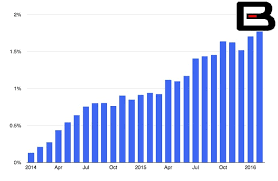Source: healio.com
Wikipedia defines artificial intelligence as: In computer science, artificial intelligence, sometimes called machine intelligence, is intelligence demonstrated by machines, unlike the natural intelligence displayed by humans and animals.
While AI is usually focused on learning, pattern recognition and problem solving, it can be combined with robotics to perform or assist in the performance of surgical tasks. Da Vinci is a leader in combining AI and robotics for surgery, but there are many other well-funded efforts underway worldwide.
We all know the impact robotics has had in industry, with the manufacture of an automobile being a prime example. Many fewer human hours are required to manufacture an automobile with a fully implemented robotic plant than one relying on human labor only. The robots in an automobile manufacturing plant simply perform repetitive tasks as programmed by their human masters, and they do not use AI to learn how to make a better automobile or improve efficiency themselves. That is left to the human mind.
The potentially malevolent side of AI combined with robotics was graphically portrayed in the 1968 Arthur C. Clarke and Stanley Kubrick movie: 2001: A Space Odyssey, in which the HAL 9000 computer with AI took over the spaceship Discovery One on the way to Jupiter, killing one of the crew members and threatening the other in order to preserve itself. In the end, the human intelligence and resourcefulness of the remaining crew member outsmarted the HAL 9000, which demonstrated the human quality of fear as it was disconnected.
In medicine, one of the most familiar applications of AI has been the reading of EKGs in which pattern recognition is critical. Still, a human analysis by a cardiologist skilled in the art nearly always follows the AI readout before a final diagnosis is made and treatment of a cardiac arrythmia initiated. In ophthalmology, the FDA-approved IDx-DR system (IDx Technologies), created in collaboration with the IBM Watson AI computer, can accurately grade the level of diabetic retinopathy with 87% sensitivity and 90% specificity. But it is not good at performing a differential diagnosis, and a skilled physician must confirm that the patient has diabetic retinopathy and not another retinal pathology such as a retinal vein occlusion.
AI combined with home diagnostics including preferential hyperacuity perimetry and OCT is being developed by Notal Vision and promises to allow patients to determine if they need an urgent visit to their doctor for an anti-VEGF injection or can delay another month. AI is good at flagging potentially abnormal findings in a diagnostic test, for example, encouraging the ophthalmologist to rule out keratoconus in a topography. It can also provide a differential diagnosis for any cluster of symptoms, signs or test results.
AI is here to stay in the field of medicine and, in my opinion, will be a virtuous partner to the ophthalmologist. Ophthalmology is highly dependent on images and diagnostic tests that will respond well to pattern recognition. Robotics combined with AI guidance systems are also entering our surgical field. I do not see AI or robotics as a threat to we ophthalmologists and expect both to be constructive partners as we strive to care for an increasing number of patients with an at best stagnant number of ophthalmologists.


